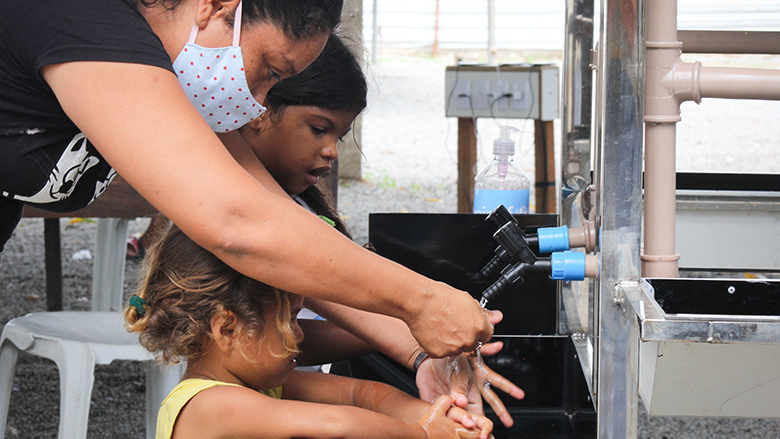Imagine that you are at school and need to use the toilet during the break. However, instead of a flush toilet and a sink, you find a dry non-flush toilet (or a hole in the ground), and nothing to wash your hands with—not even hand sanitizer gel! How would you feel?
Across Brazil, 39 percent of all schools lack basic hand-washing infrastructure, according to the WHO/UNICEF Joint Monitoring Programme for Water Supply, Sanitation and Hygiene (JMP). The situation described above (together with the many negative feelings it might evoke) was the day-to-day in those schools until the pandemic forced us into social isolation. However, things will not have changed when schools reopen, as most of them still lack adequate access to water and sanitation facilities.
A new study by UNICEF, the World Bank and the Stockholm International Water Institute (SIWI) shows that children and adolescents are among the invisible victims of Brazil's lack of investment in water and sanitation infrastructure. For public school students, the situation is even more alarming, as private institutions have more than twice the coverage of these services.
In the North of the country, the disparities are even greater. Only 19 percent of public schools in the state of Amazonas have access to water supply services, while the national average is 68 percent. Sanitation is also critical: in the state of Acre, for example, only 9 percent of public schools are connected to the public sewerage system; in Rondônia, 6 percent; and in Amapá, only 5 percent.
Indigenous peoples are also amongst those most affected by lack of sanitation, as well as people living in favelas (where women are the majority), and in rural areas. For them, it is difficult to follow the most basic recommendation against the spread of COVID-19 and other diseases: thorough hand washing with soap and water.
No Facilities at Home
JMP data reveal that 15 million Brazilians living in urban areas do not have access to safe water, that is, drinking water, protected from external contamination and available at home. In rural areas, 25 million people only have limited access to water from safe sources, but far from their homes.
This is the reality, for example, in the Conceição quilombola community in Bequimão (state of Maranhão), where 16-year-old Aldenice Melo lives. “The well water that supplies the community is not the best. It's brackish. So we have to travel to a neighboring village to fetch drinking water,” she says.
When it comes to sanitation, over 100 million Brazilians do not have access to adequate facilities, which are not shared with other homes, and where sewage is collected and treated in a safe manner. Of this total, 2.3 million still practice open defecation.
“Where I live, not all houses have a bathroom—only a few. Because there is no sewerage system, people tend to use pits, which contaminate the soil,” reports Isabele Silva, 17, from Itaberaba (Bahia).
“It is really hard to have sewage at your doorstep, and not a drop of water at home,” adds Thais Matozo, 20, a resident of the Rocinha community in Rio de Janeiro.

